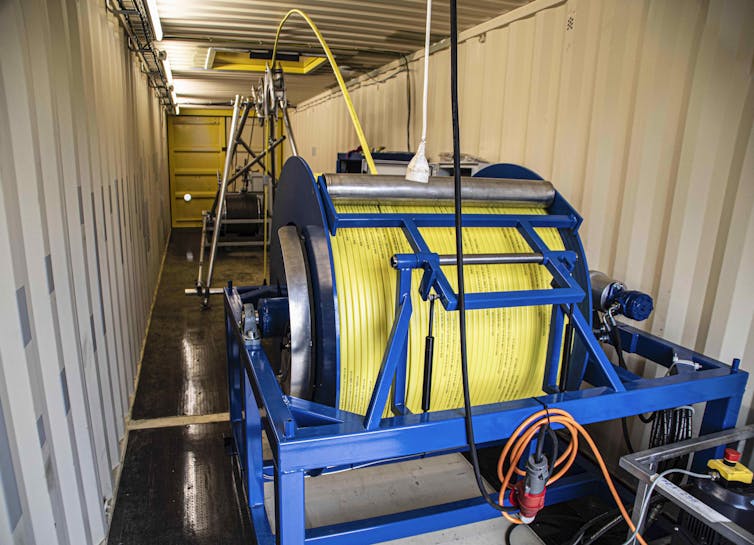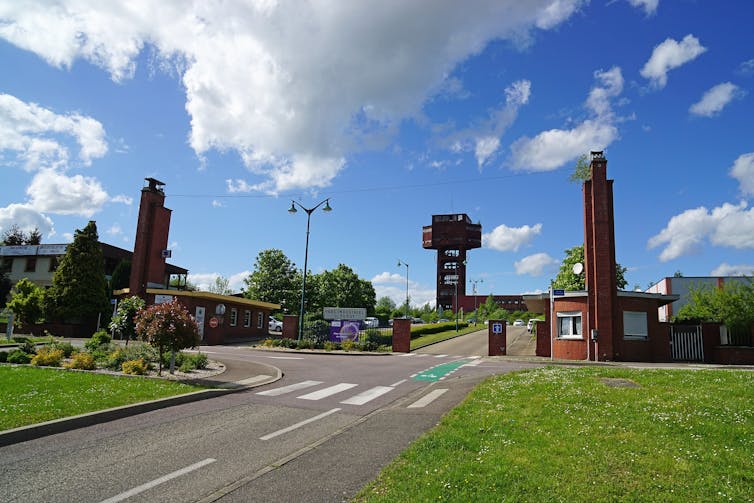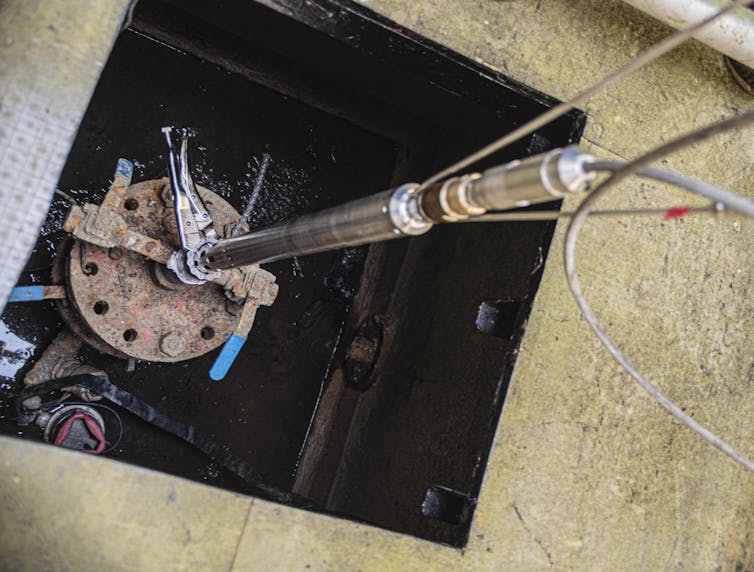Every now and again, in science one happens to chance upon something one wasn’t looking for. Occasionally, that discovery is of greater value than the one was originally after. Call it serendipity. That’s what happened to us when we probed the subsoil in Lorraine, Southeastern France, and hit a potential deposit of naturally occurring, or white hydrogen. In the sub-soil of this region, still badly hit by deindustrialisation, could be hidden nothing less than the world’s biggest known supply of the gas to date.
From a mission on methane to hydrogen discovery
Till now most white hydrogen discoveries have been made by accident by geologists on the hunt for fossil fuels. As members of the Laboratoire GeoRessources of the University of Lorraine and of France’s National Centre of Scientific Research (CNRS), we were no exception. Our team had set out to assess the level of methane gas in the Lorraine sub-soil, to make an estimate of the total quantity present and to see if local production was viable. To achieve this objective, we needed to develop new technology to sound out, in situ and on a continuous basis, rock formations from the Carboniferous period, the geological era from 359 to 299 million years ago.
This was largely possible thanks to the development of the SysMoG probe, in collaboration with company Solexperts, a tool which allowed us to analyse the gas dissolved in water in rock formations up to 1200 metres in depth while respecting the environment: a world first.
GéoRessources, Fourni par l’auteur
Following chemical monitoring of the rock strata and accompanying methane deposits, we had been surprised to find that a high proportion of hydrogen was present and that its concentration grew as we descended, reaching 20% at 1250 metres down. Such levels allowed us to speculate that at 3000 metres below the ground, hydrogen content could exceed 90%, according to our modelling. On the basis of the gas data at 1100 metres below ground (14% hydrogen), the Lorraine deposit could contain up to 46 million tonnes of white hydrogen, which is to say more than half of the world’s current annual production of grey hydrogen.
This comes on top of France’s other potential white hydrogen reserves currently being explored in the Alps, New Caledonia and the Pyrenees. Together with the Lorraine deposit, these resources could enable France to produce three million tonnes of the gas a year. Other untapped deposits could lie in the US, Australia and elsewhere in Europe, including Spain, Germany, Kosovo, Iceland, Finland, Sweden, Poland, Serbia, Norway, Ukraine, Russia and Kazakhstan.
Launched in 2014, the well in Bourakébougou, Western Mali, remains the world’s only exploited white hydrogen site. Its production, which hovers around 5 tonnes per year, however pales when compared to global grey hydrogen output estimated at 80 million tonnes per year.
The different colours of hydrogen
The “colours” of hydrogen point toward the process by which they’re produced. As a reminder, hydrogen is a gas which, most of the time, is found in compounds with other elements, eg in water and fossil fuels.
Grey hydrogen refers to hydrogen produced in a factory by processing natural gas. It’s currently the main source of hydrogen used in energy, and attracts criticism because of the amount of CO2 emitted during production.
Black hydrogen is made from coal, whereas green hydrogen comes from electrolysis of water using electricity generated from renewable sources. All these types of hydrogen are what is called secondary forms of energy. White hydrogen, which is what we’re interested in here, is hydrogen already present in that state in nature. It is therefore a primary energy source.

GeoRessources, Fourni par l’auteur
Next step: excavating to 3,000 metres
A directly available potential supply of white hydrogen offers the huge advantage of not needing additional energy inputs to be made from other gases/substances.
It’s also cause for excitement, because the theory we are currently leaning toward to explain the presence of hydrogen under Lorraine would suggest an almost infinite supply of this gas.
When it comes to extracting such a supply, it might seem a long haul but the way to get there has already been well mapped out. We first need to prove that hydrogen is evenly distributed in a basin 490km2 in area. To do this, the next stage involves deploying the SysMoG probe in boreholes near the existing one at Folschviller where we discovered the presence of hydrogen. Then, we need to show that the concentration of hydrogen keeps growing at depths greater than 1200 metres.
Sadly, there aren’t any boreholes in the Lorraine region that allow us to send a probe so deep.

A.BourgeoisP/Wikimedia, CC BY-SA
We propose a deep excavation (to 3000 metres down) to demonstrate that the concentration of hydrogen does indeed grow as you descend. If this is the case, we will confirm the presence of an exceptional deposit of naturally occurring hydrogen, bigger than any discovered elsewhere, and we can make a first realistic estimate of its scale.
A number of commercial and institutional partners, French and international, are interested in financing the project. It remains for us to convince the French state of the value of this initiative, to finally secure the necessary authorisations. Once all steps have been taken, the work would be carried out through our REGALOR II research programme, which we hope to get started in the first quarter of 2024, and which should run for up to 3-4 years.
Hydrogen still stokes irrational fears
The general public can still be unnerved by hydrogen, notably older people who grew up with images of Zeppelin LZ129: the Hindenburg. This hydrogen-powered airship caught fire upon landing in 1937, leaving an indelible mark on popular perceptions of the gas. Undeniably, hydrogen like all fossil fuel gases is inflammable. It can form volatile compounds when its concentration in the air exceeds 4%. However, there’s no risk of it blowing up underground in Lorraine’s Carboniferous rock formations, because there isn’t any oxygen for it to combine with. One of the challenges of potential future extraction of hydrogen here will involve avoiding all contact between hydrogen and oxygen in the air, through separation and distribution processes.

Wikimedia
Nonetheless, hydrogen is a light gas, which escapes through the smallest gap or simply by filtering through other matter. It’s this property which explains the difficulties of storing it for an extended period. But handling hydrogen is commonplace, in both industry and transport, and the risks have been under control for a long time.
In Lorraine, after our initial discoveries in Folschviller, we’ve seen a wave of enthusiasm from elected councillors of nearby towns, and genuine support to continue exploration. The mining heritage of this region, which continues to be pummelled by closures (in the coal and steel sectors) is for us a considerable asset in all possible future scenarios for drilling for hydrogen, since the population is so familiar with the geology and retains strong extractive industry skills.
Translation from French to English by Joshua Neicho.




